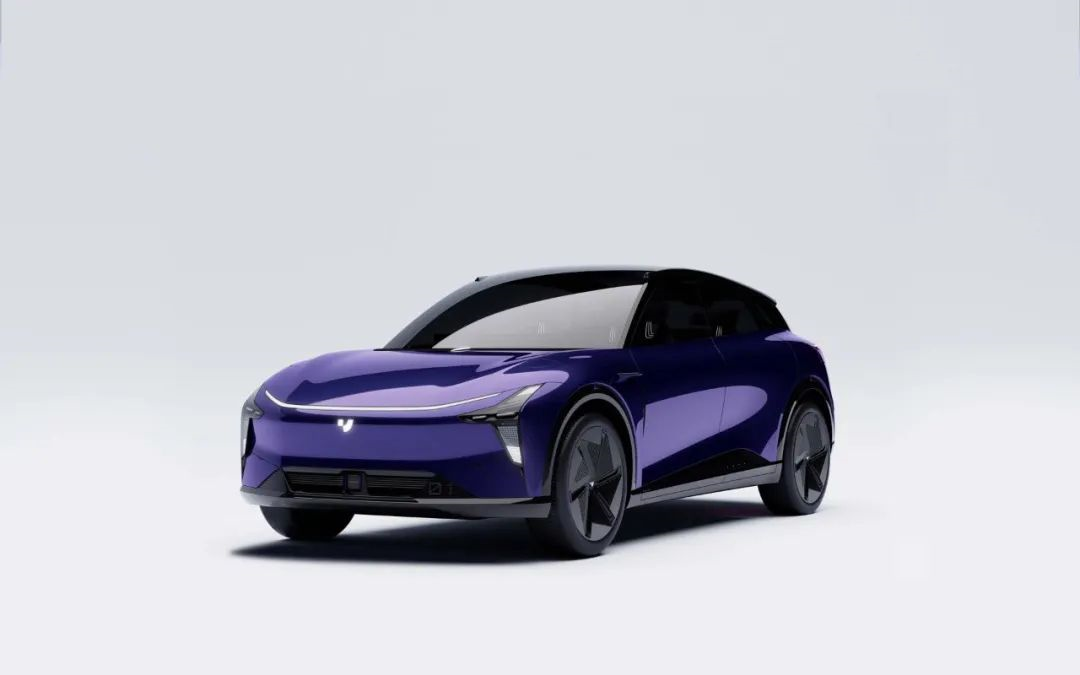Author: GeekCar
The other day’s Jidu press conference was perhaps the most abstract I’ve ever experienced, and I witnessed a rather “abstract” concept car.
If you asked me about my impression of this car, I think a foreign media headline is particularly appropriate: “Like imagining the present 20 years ago.”
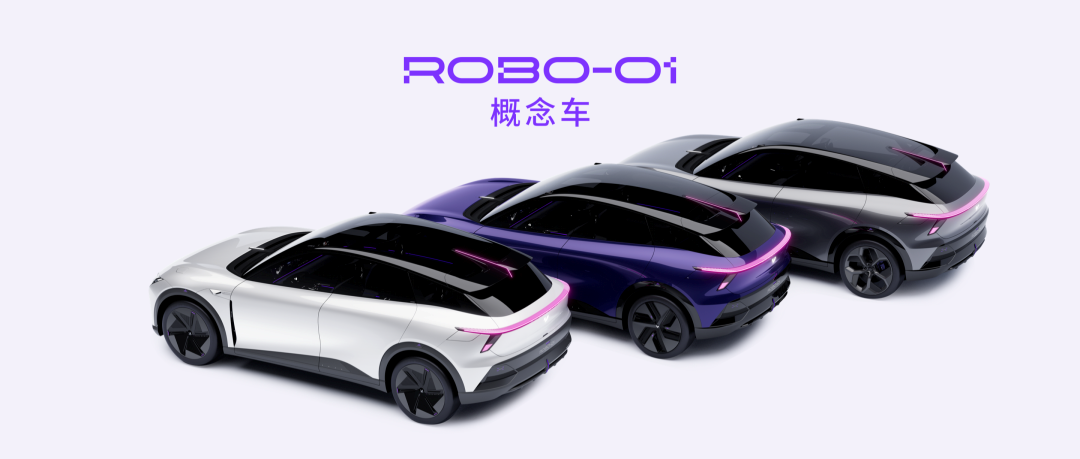
It can be said that this is a concept car full of “tags”, like a proposition essay, where every design seems to be confirming Jidu’s definition of this car as an “automotive robot.”
In fact, as a concept car, it is normal to express the design concept through abstract and exaggerated styling. However, as Jidu’s first concept car, the ROBO-01 is obviously not just a concept car designed to “express design concepts.”
Because the mass-produced model that will be unveiled in the second half of this year will replicate 90% of the ROBO-01’s design. This means that most of the designs and functions we see on this car will be realized on the production car and reach the hands of users.
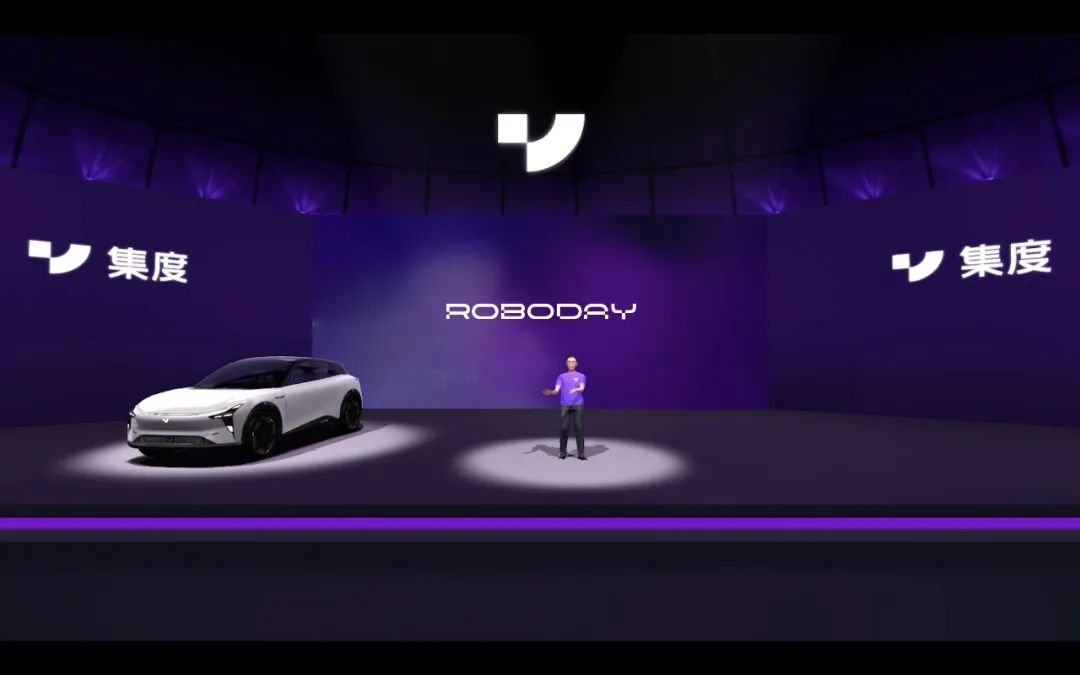
We can joke about concept cars in the metaverse, but when it is about to go into production in a few months, we have to take a serious look at the ROBO-01, trying to explore and speculate whether these technologies are based on users’ real-use scenarios and experiences, and provide Jidu with some advice to give users greater value in the production car models, rather than just a fleeting glance in the metaverse.
A Bold Styling That Seems Familiar
The first impression of the ROBO-01 is like a “most familiar stranger”, with exaggerated butterfly doors, an adjustable rear wing, and a simple no B-pillar design.
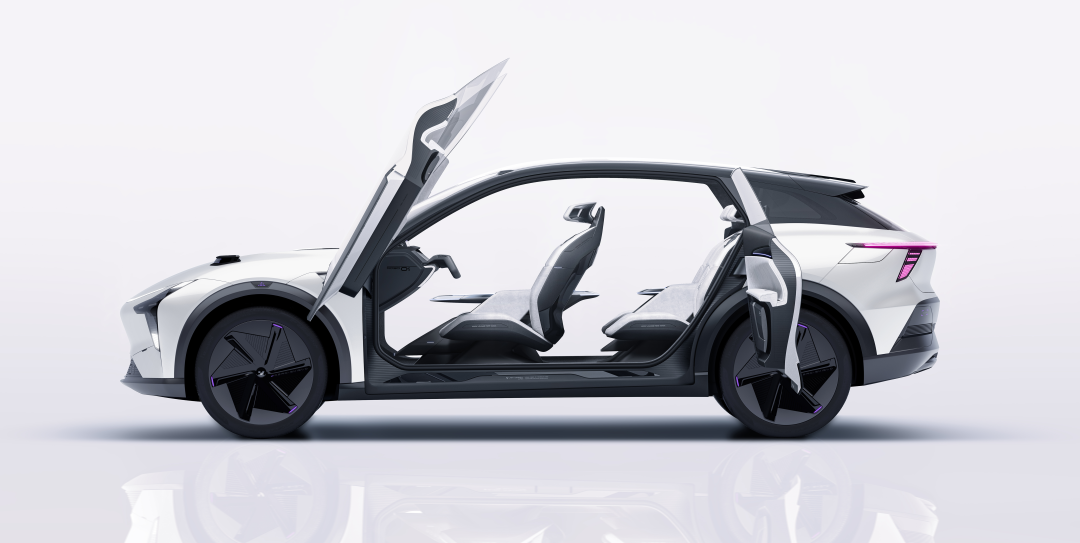
But upon closer inspection, I always feel that its styling is similar to certain cars, until I saw these three images with facial styling highly similar to the previous ones.
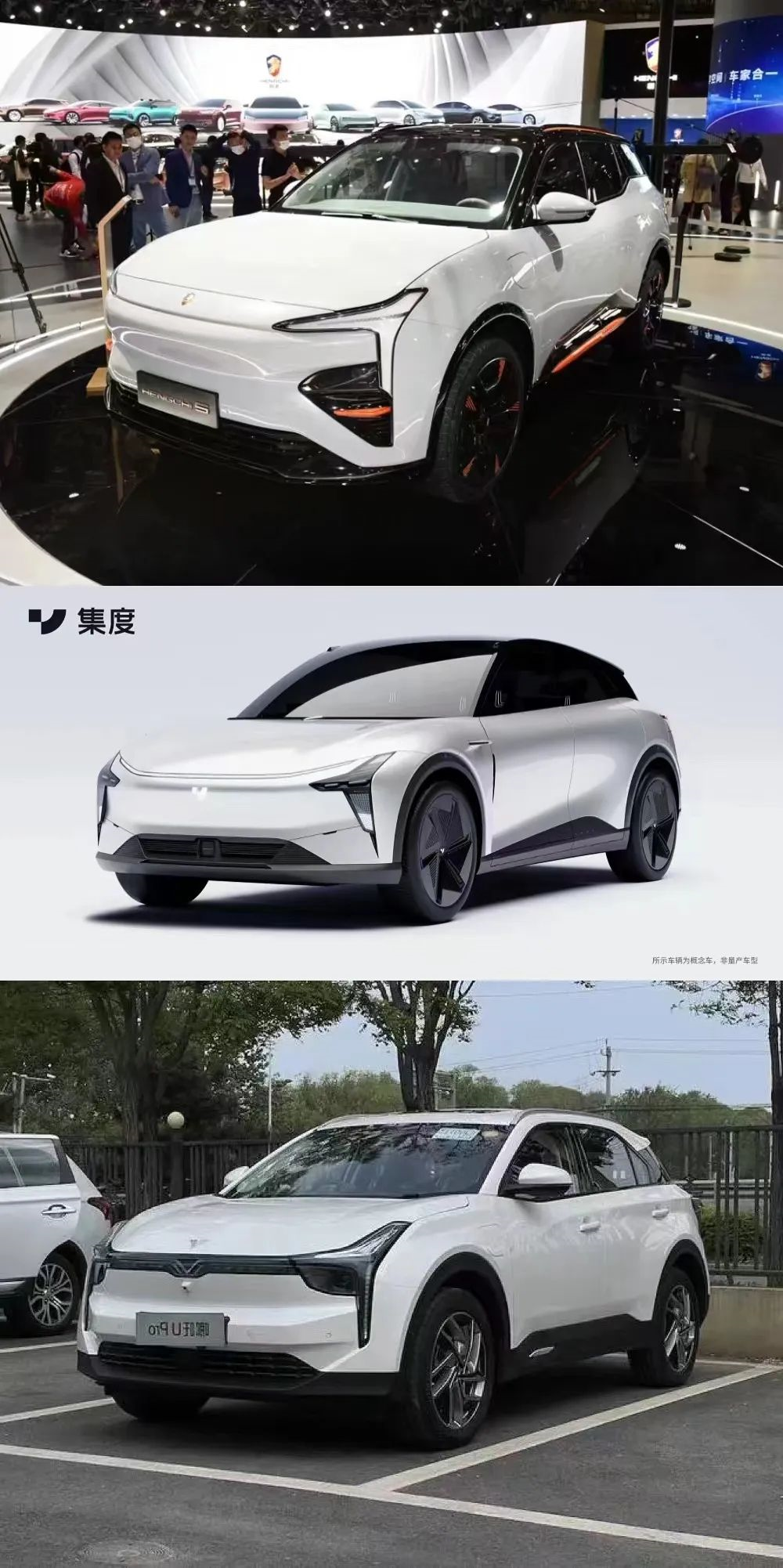
Even the light module under the headlights is not first proposed by Jidu in the industry.
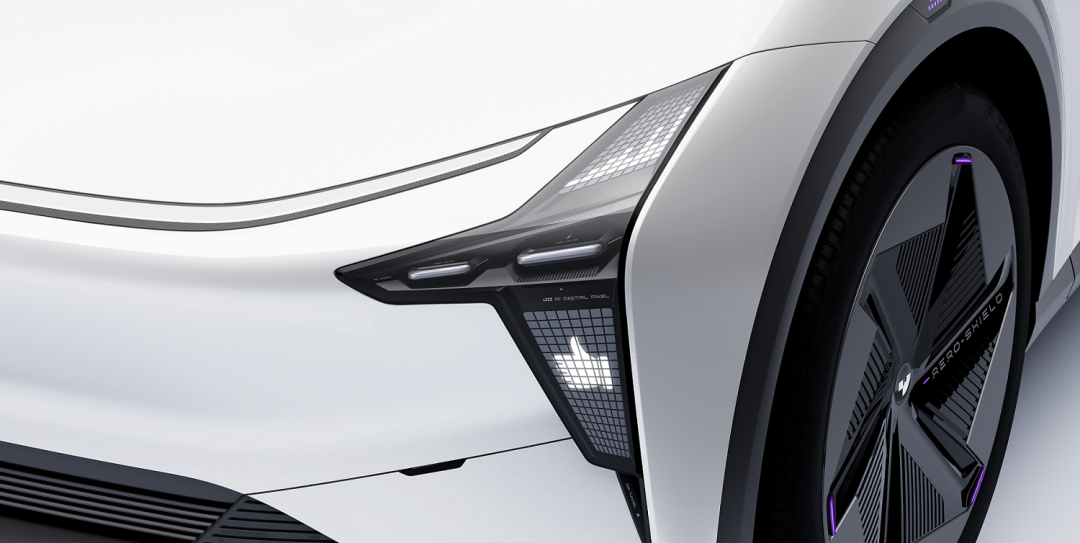
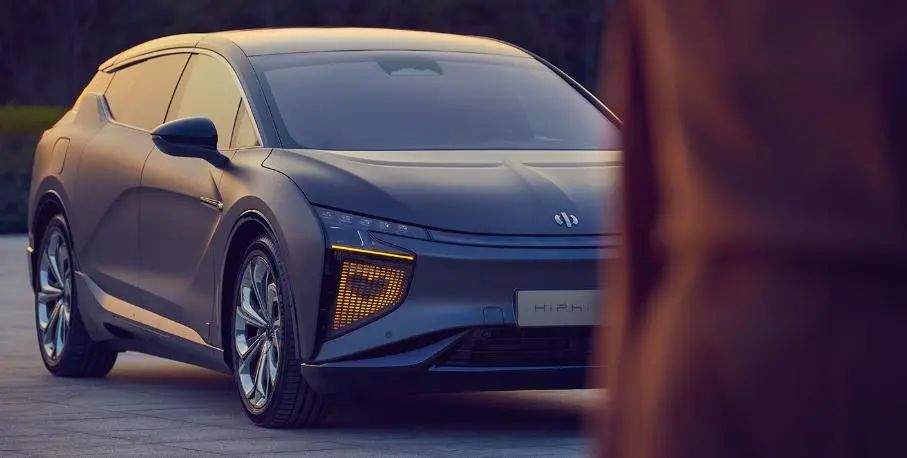
Of course, whether the styling design is beautiful or not is not worth discussing among us, because subjective feelings have too much influence, and everyone has different understanding of styling. However, I believe that the appearance of such strong “similarity” has nothing to do with personal aesthetics.
As for why ROBO-01 appeared to be similar, there may be two reasons.

Firstly, efficiency. As a new force in the industry, Enovate, as a latecomer, may have to compromise efficiency for many things, and build the car as quickly as possible, which is the most important thing for Enovate. And following the trend will not overchallenge consumers’ aesthetics, or Enovate’s designers may really approve of this design trend. However, every outstanding designer we have contacted is proud and scornful of the matter of “following”. No one wants to be an ordinary person following others.
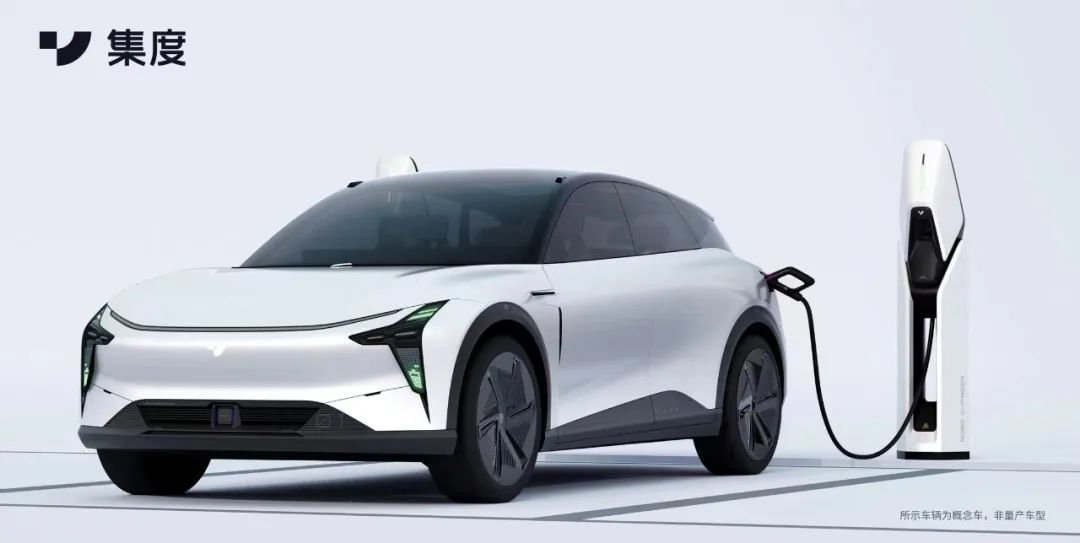
Secondly, the designer’s vision may be limited. When automotive designers are just starting to learn automotive design, the teacher will ask them to do one thing: constantly search other mature works on various design websites to copy. Copying is the fastest way to improve skills, and is also a way to broaden horizons. The more you see, the lower the risk of similarity with others.
Original design is a valuable asset in any field, because the least popular thing in design is similarity. “Similarity”, “similarity”, and “plagiarism” are taboo in the design circle. When users cannot feel a dazzling feeling, the product will naturally lose its value.
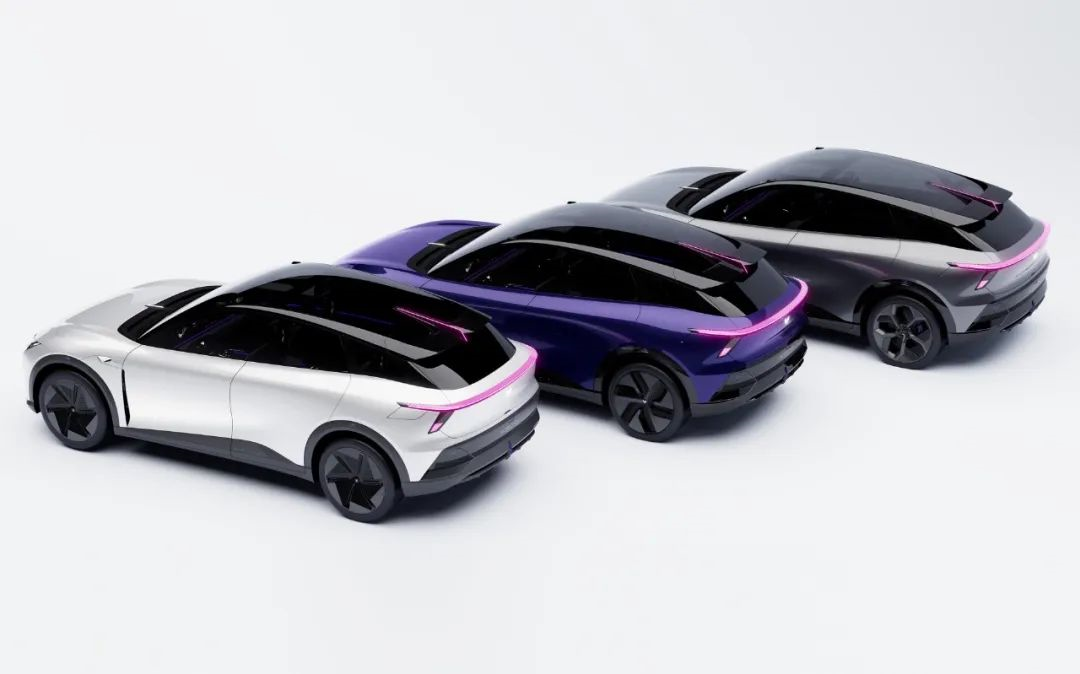
Cyber Technology or Overdesign?
If the exterior design of the ROBO-01 concept car still seems to fall within the conventional aesthetic range, then the various details inside the cabin challenge human imagination.
Amidst admiration, when we look at the exquisite pictures and gorgeous press releases, we also have some questions.
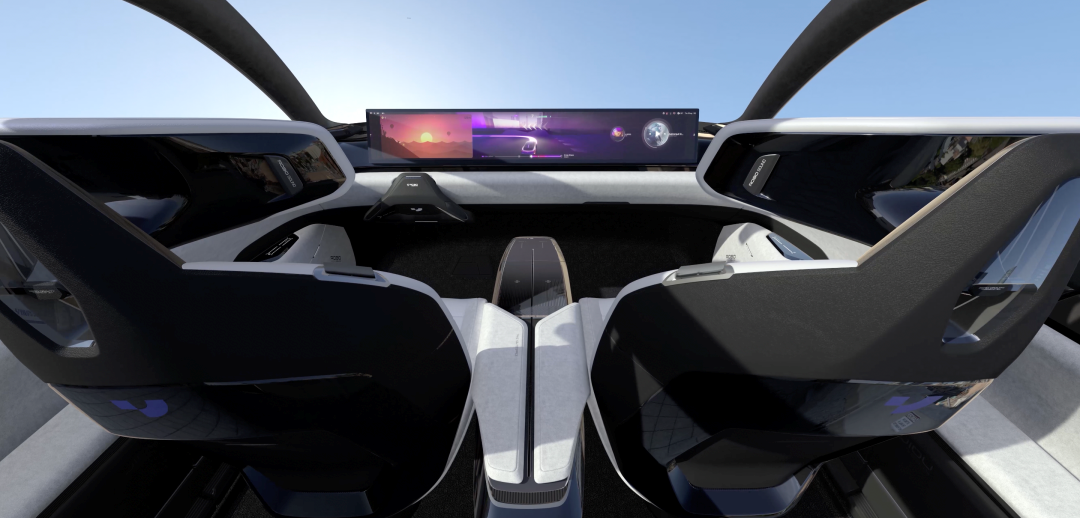 ## Regarding the Status of Physical Buttons in the Cabin
## Regarding the Status of Physical Buttons in the Cabin
We previously explored the topic of physical buttons in the article “Eliminating Physical Buttons: An Innovation or an Overreaction?” However, we did not expect Jidu to completely eliminate physical buttons in their concept cars so quickly.
The current national standard for motor vehicle safety regulations (GB 7258-2017) does not provide a clear requirement for which buttons must exist in the car cabin.
We acknowledge Jidu’s innovative spirit and are happy to see a brand take the first step towards eliminating physical buttons. However, if the aim is to emphasize the atmosphere of technology, there is no need to rush to eliminate all physical buttons in the cabin.
After all, in the current technological environment, well-designed physical buttons remain the fastest and most intuitive way to achieve muscle memory, reduce visual distraction, and provide the best feedback.
With the disappearance of physical buttons, pressure is naturally placed on the large in-car screen and other interactive options such as voice recognition.
In our research, the majority of intelligent car owners we surveyed stated that they have become accustomed to the voice interaction mode in the car cabin. Although there may be small flaws, voice interaction is the most valued and trusted way for users outside of physical buttons.
The ROBO-01 concept car emphasizes “full offline voice” and being “unaffected by network signals,” which seems more like a “fallback solution” upon closer inspection.
Being fully offline means that using a local engine for intelligent voice means that the response speed will be much faster than with a cloud-based engine, as advertised “millisecond-level response.” However, a large number of functions such as voice search will become unavailable when disconnected from the network, and the ability of the voice assistant will be limited to the vehicle itself. Without the support of cloud engine, computing power and predictability will be restricted, and the expressive tone of voice may be affected.
Previously, XPeng Motors used a “multi-level cache” method to overcome the negative impact of network jitter and other factors on the voice performance by caching good voices at different levels and then transmitting them, reducing the reliance on the network – but it is important to note that it is reducing, not eliminating reliance on the network.It is clear from the emphasis on full offline voice capability in the ROBO-01 concept car that intelligent voice recognition will not be interrupted by a network outage, as long as the user does not go into an area without signal. Other interaction abilities mentioned by Jidu include visual perception, voiceprint recognition, posture and lip movement capture.
Voiceprint recognition is designed to fulfill Jidu’s emphasis on “full scenario coverage inside and outside the car,” corresponding to the avant-garde design of the ROBO-01 concept car without door handles. There is no specific regulation that door handles are a must-have feature. Does this mean that other forms of interaction can replace their existence?
Just imagine that even without a digital key, you can shout at your car and it will recognize you and automatically open the door – maybe “lift up” is a more appropriate gesture considering ROBO-01’s advanced way of opening doors. For other interaction methods, whether the recognition accuracy can meet expectations, whether there are practical application scenarios, whether the actual experience is satisfactory, and whether relevant designs can be removed to focus on voice interaction should all be considered.
As for the other core interaction feature, that huge “3D seamless integrated ultra-wide screen,” it goes without saying that it carries a heavy responsibility.
In a previous “Intelligent Cabin Intelligence Bureau” column, we evaluated the Ford EVOS and the Lynk & Co. Alpha S, which have screens with the same length and proportion as ROBO-01. At that time, we marveled at how to make users adapt comfortably to this ultra-long integrated screen and use it effortlessly, which is a huge test of interaction designers. EVOS and Alpha S introduced an interaction mode that allows the main and co-pilot to drag and drop content, which maximizes the co-pilot’s participation in navigation and auxiliary behaviors. How will ROBO-01, the high-profile vehicle, do it? Will it follow the methods of its predecessors, or will it have its own skills?
Thinking about these issues always reminds us of the Byton, which was stillborn.
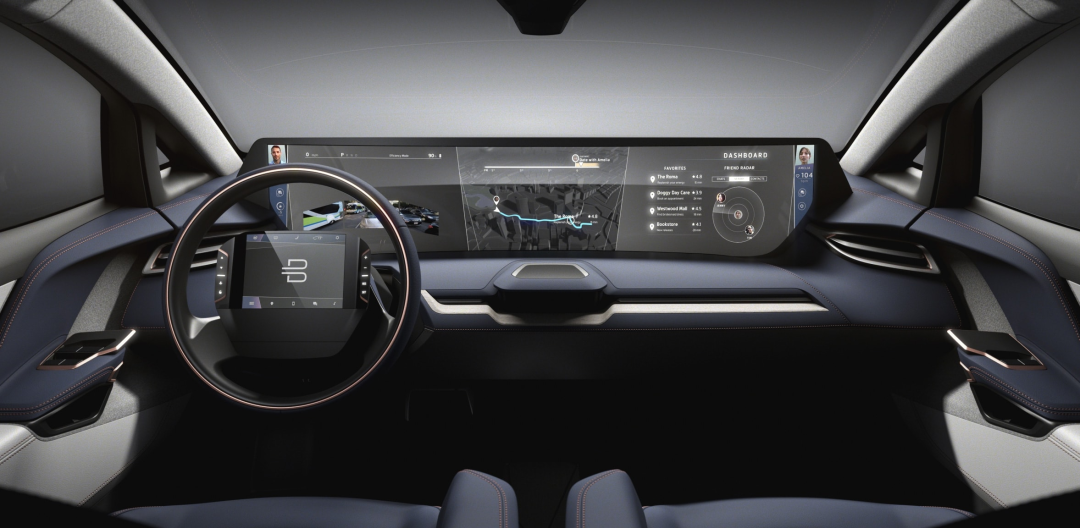 At that time, the problems that Ford EVOS, Zeekr Alpha S, and Byton needed to face were now placed in front of ROBO-01.
At that time, the problems that Ford EVOS, Zeekr Alpha S, and Byton needed to face were now placed in front of ROBO-01.
How to ensure the reasonable layout of information to control the fatigue caused by the need for one-sided personnel to turn their heads to see key information?
The information elements displayed on both ends of the screen in the video are obviously not for the passenger on the other side. What kind of design considerations are these?
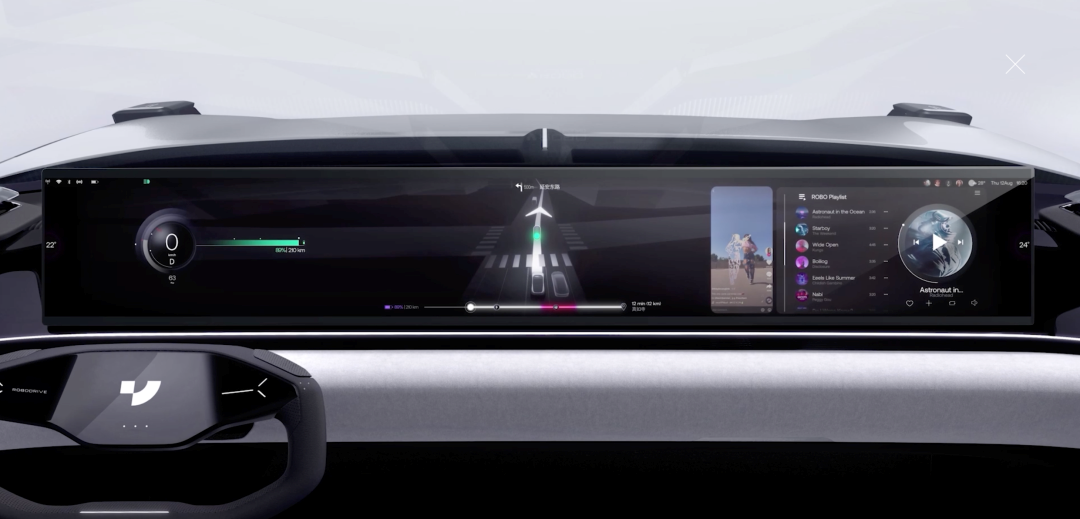
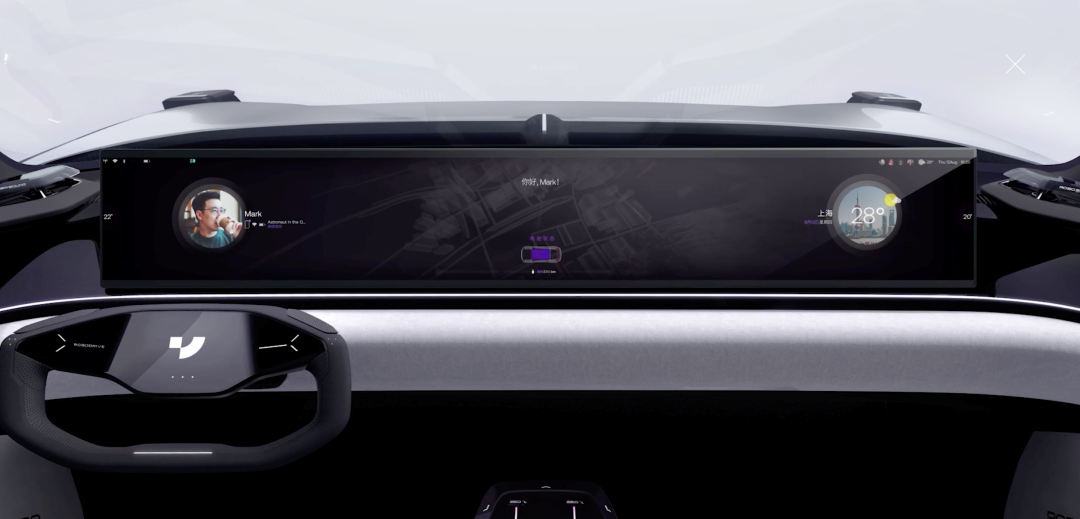
The video and pictures did not provide us with enough information to draw conclusions. At least before seeing the real design and the actual car, we would like to reserve our opinions.
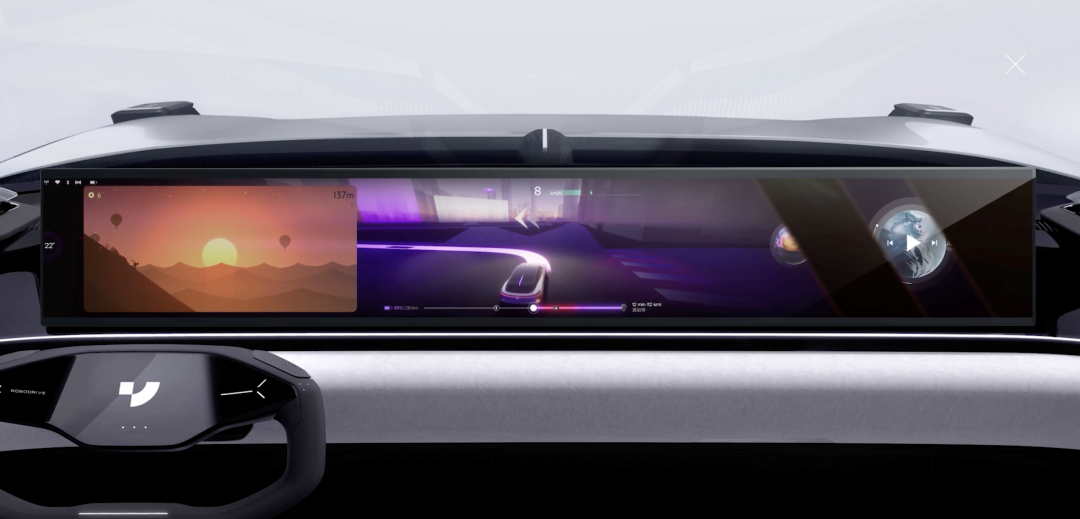
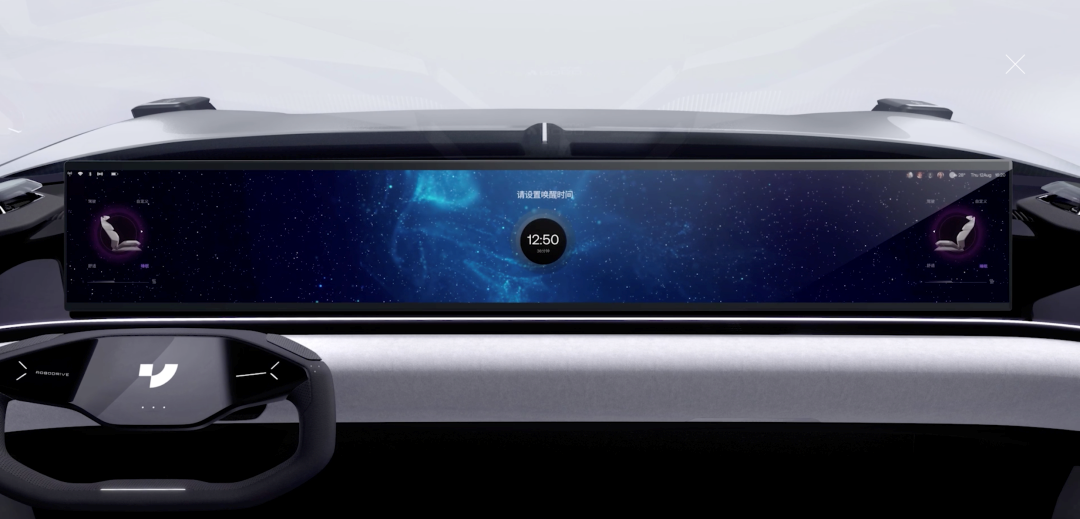
For those who are so keen on touch screens, besides Tesla, the only one that comes to mind is Lockheed Martin’s F-35 fighter jet — although the pilots’ feedback on the touch screen is not good, at least we don’t have to make high-overload maneuvers on the road while enduring several Gs of acceleration.
For many years, reality has been teaching us not to put all our eggs in one basket.
Laser radar of “hopping lights” is difficult for autonomous driving to implement
When it comes to the intelligent driving of the Jidu concept car ROBO-01, the most concerned issue must be “laser radar.” ROBO-01 is equipped with two “hopping light, liftable, and collapsible laser radars located on the front hood,” and the most controversial issue is the layout and collision safety of laser radars.

As early as April, when Jidu first announced the laser radar layout of SIMU Car, LI Xiang, the CEO of Ideal Motors, expressed his opinion on Weibo:

The next day, Jidu CEO Xia Yiping also replied:
Actually, there is no unified standard or mandatory requirement for where to install lidars. In my opinion, there are many factors that influence the number and layout of lidars. For example, pedestrian collision, maintenance cost, and vibration control mentioned by Li Xiang… And it looks more coordinated where to place the lidars.
Of course, there is also a question, what is the role of lidars?
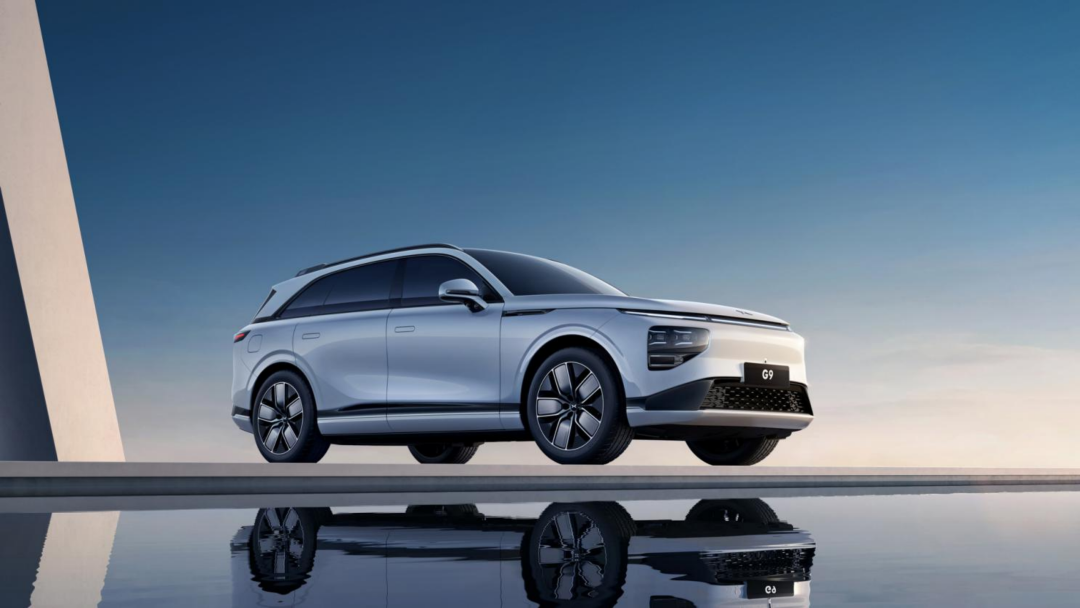
Taking Xpeng G9 and Xpeng P5 as examples, these two models are equipped with two lidars, which are arranged on both sides of the front bumper, integrated with the headlights, and look more coordinated. But in addition to looking better, there is one critical point.
He XPeng, the CEO of Xpeng, once mentioned:
We think that from the trend perspective, all roads, traffic lights, and regulations in the world are based on the perspective of human eyes to drive. We believe that this is the most efficient, closest to a real person, and cheapest way, and we can also add lidar combinations to do safety well.
Therefore, it is evident that Xpeng’s intelligent driving system takes visual perception as the core, and the role of lidar is to provide more safety redundancy. Lidar is not the perceptual core of the autonomous driving system, and the performance requirements for lidar are not so high.
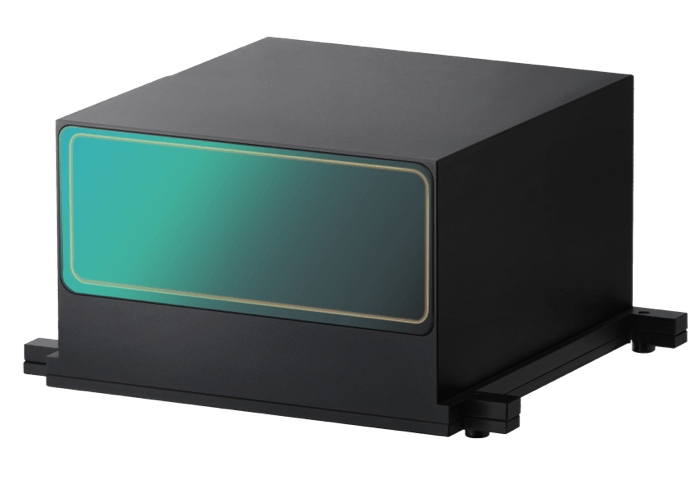
The Livox HAP lidar selected by Xpeng has a detection distance of 150 meters for 10% low reflectivity objects, a data rate of 450,000 points/second, and an equivalent point cloud density of 144 lines.
Now let’s take a look at the lidar layouts of NIO ET7 and Li Auto L9, which adopt the “watchtower” layout.
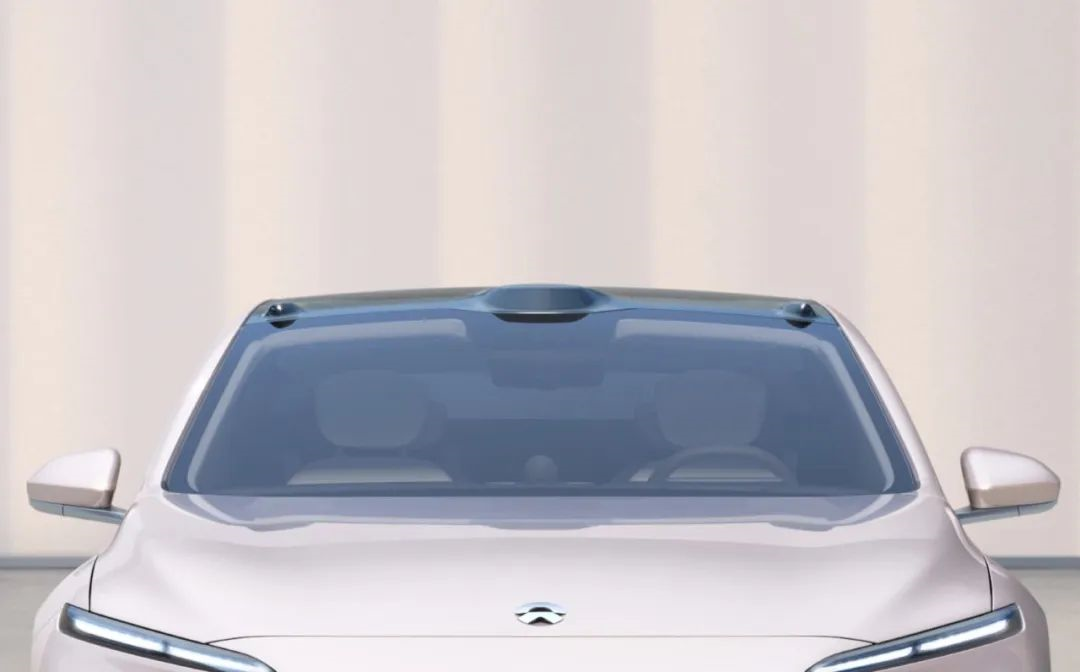
-
The Velodyne LiDAR used by NIO ET7 has a detection distance of 250 meters for 10% low reflectivity objects.
-
Li Auto L9 uses the same Hesai AT128 lidar as JiDu ROBO-01, with a detection distance of 200 meters for 10% low reflectivity objects.The difference between Ideall L9 and Jidu ROBO-01 lies in that Ideall L9 uses a single 120° horizontal field of view composed of a single LiDAR, while Jidu ROBO-01 uses two LiDARs to form a 180° horizontal field of view. Moreover, Jidu has the support of Baidu in the field of intelligent driving, and Baidu has long been more focused on vision in the research and development of intelligent driving systems for passenger cars. As a result, Jidu ROBO-01’s two LiDARs are more like safety redundancies rather than perception cores, and the LiDARs placed on the front hood are easier to form a 180° horizontal field of view compared to the front of the car.
However, just as we were adapting to the watchtower-style design, Jidu ROBO-01’s LiDAR layout seems to have once again challenged our aesthetics.
In fact, my biggest concern about Jidu ROBO-01’s LiDAR is “safety”, mainly pedestrian collision safety. The LiDAR placed on the front hood may cause secondary harm to pedestrians in the event of a collision. Currently, many vehicles are equipped with pedestrian collision protection, which means that the front hood pops up to a certain height to give pedestrians some collision buffering. The pop-up speed is quite fast, but it also has a high false trigger rate. For example, some owners hit a chicken on the road, and the front hood “exploded.”
Even though Jidu mentioned that this LiDAR can be raised and collapsed, I am still curious about:
- Whether the response of the LiDAR’s lift or collapse mechanism in the event of a collision is fast enough to avoid secondary harm to pedestrians;
- How high the repair cost will be after the LiDAR collapses in a collision;
- Whether the LiDAR’s lifting and collapsing mechanism will have false triggers.
After discussing the layout and safety of the LiDAR, another thing that intrigued me when Jidu released ROBO-01 was the “steer-by-wire chassis.” Previously, Geely, Jidu, and NIO became the joint leading units for the development and standardization research of steer-by-wire technology and took the lead in formulating national standards for steer-by-wire steering.
Steer-by-wire chassis plays a crucial role in the development of autonomous driving, but one of the longstanding constraints of its development has been “safety.”Therefore, I have seen too many concerns about safety in the intelligent driving of Jidu ROBO-01. I believe that even a consumer of intelligent electric vehicles standing in front of the Jidu ROBO-01 would have the same concerns.
Today, more and more consumers are trying new brands, new products, and new technologies, possibly because post-90s have become the main consumers.

Therefore, even with the endorsement of two giants, Baidu and Geely, how to prove the strong technology, high safety, and gain consumer trust are the top priorities for Jidu. It is not like using After Effects to create road test videos. We post-90s dare to innovate, but we are not foolish…
In addition to sensor and wire control technology, the biggest highlight of Jidu and ROBO-01 may be intelligent driving. For Baidu, which has been deeply involved in the automatic driving field for nine years, Jidu is the only brand that applies the Apollo automatic driving unmanned ability and safety system in full stack. Jidu is confident in describing its ability as “plug and play.”
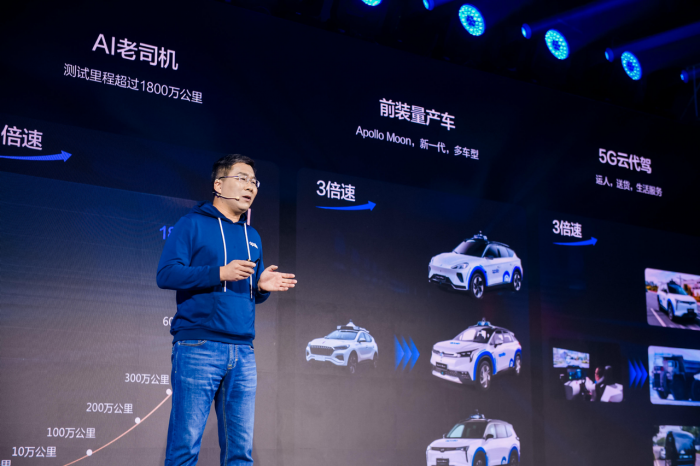
With the accumulation of 27 million kilometers of automatic driving test mileage in Apollo for nine years, the large-scale Robotaxi on-road test fleet, L4-level unmanned driving capacity may not be as easy as “slicing watermelon and cutting vegetables” when applied to mass-produced vehicles.
At the end of April, the scale of the Beijing Intelligent Networked Vehicle Policy Pilot Zone was further expanded, and Baidu Apollo can conduct Robotaxi testing in a range of 60 square kilometers, which is twice as large as before. Although the test range is doubled, the area of 60 square kilometers still cannot compare with the range that mass-produced vehicles may reach, and the road scenes experienced in this area are far from sufficient to cover the numerous unlikely events that mass-produced vehicles may encounter.
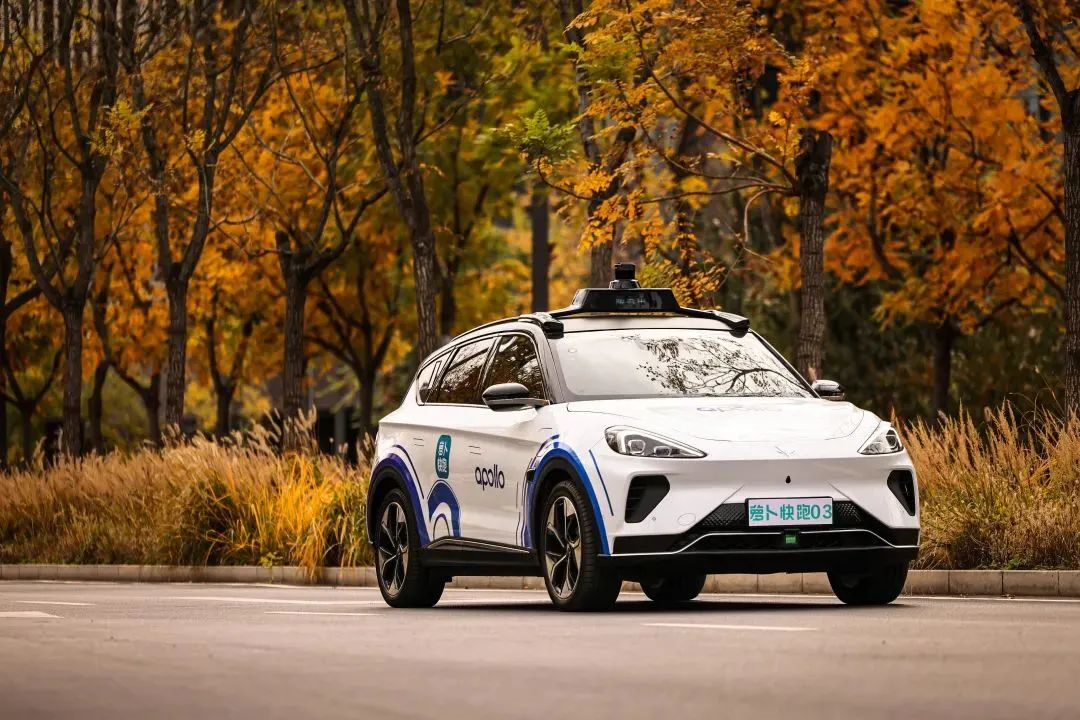
This raises a question about the “plug and play” commitment of Apollo’s intelligent driving: with top-notch system and software and hardware configurations, how much can the intelligent driving ability be demonstrated in mass-produced vehicles and complex daily driving scenes?
In addition to the most critical scenes and data for automatic driving, cost is also a problem that we have to worry about for Jidu.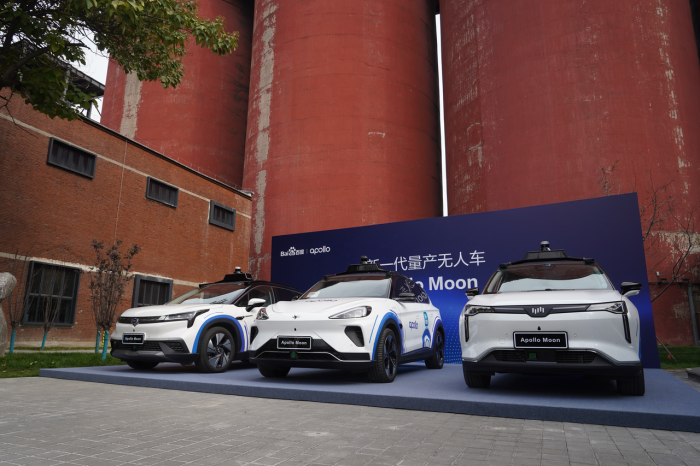
A year after its launch, Apollo Moon has reduced the cost to one-third of the industry’s standard, but still requires 480,000 yuan. Prior to last year’s Shanghai Auto Show, BAIC’s Arcfox Alpha-S showcased its urban intelligent driving capabilities. With the support of Huawei’s intelligent driving technology, the price of the Alpha-S HI version increased by 100,000 yuan, reaching the level of around 400,000 yuan compared to the regular version.
How to cover the expensive cost of high-end intelligent driving like a 20,000 yuan mass-produced car that Li Yanhong envisions? Alternatively, like other automakers, choose a software subscription model to achieve the “plug and play” experience through additional payments?
The “Robot” with Variable Shape Puts the “Extreme” Test on Mass Production
After looking at the abstract design and intelligent ideas, let’s “get down to earth” and consider the feasibility of this concept car, which will be “90% mass-produced,” in a few months when it enters mass production.
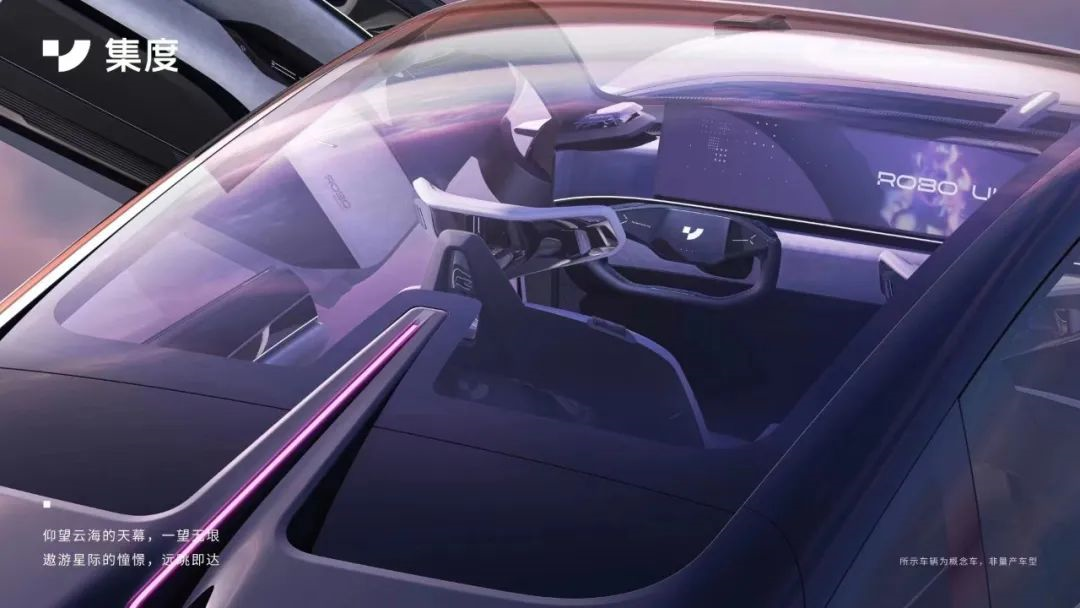
First, let’s recall the positioning of Jidu’s first mass-produced car. Recently, in Baidu’s Q1 2022 earnings call, Baidu CEO Li Yanhong revealed that Jidu’s first mass-produced car is internally codenamed Mars 1 and is 90% similar to the ROBO-01. The new car is priced at about 200,000 yuan and is expected to be launched for sale in 2023.
How to make Li Yanhong’s dream of an “automotive robot” a reality? As we have discussed regarding intelligence-related elements, in terms of design and engineering, the solution that Jidu engineers came up with is to make more parts “variable,” making it look as much like a “robot” as possible.
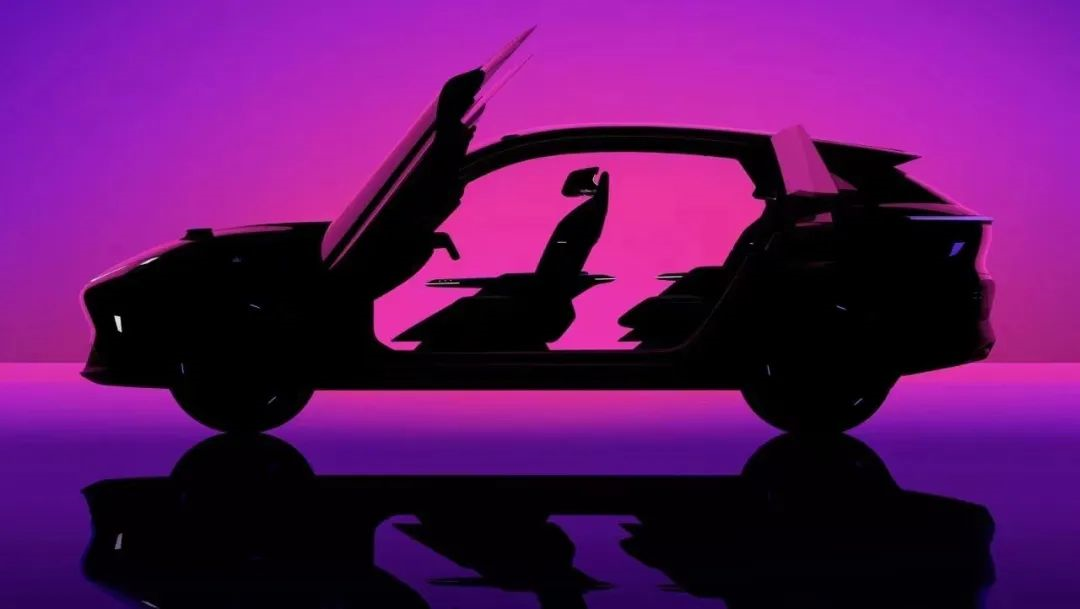
Since ROBO-01 has a 90% similarity to the mass-produced car, the issue of how to implement such a “variable” design in mass production has become an unavoidable consideration.
After all, before the release of ROBO-01, we had never seen so many motors on a car: such as the extendable lidar on the front hood, the automatic opening doors, the foldable steering wheel, the automatic lifting headrests on the front seats, the electrically powered storage compartments on both the front and the back rows, and the lifting tail wings.
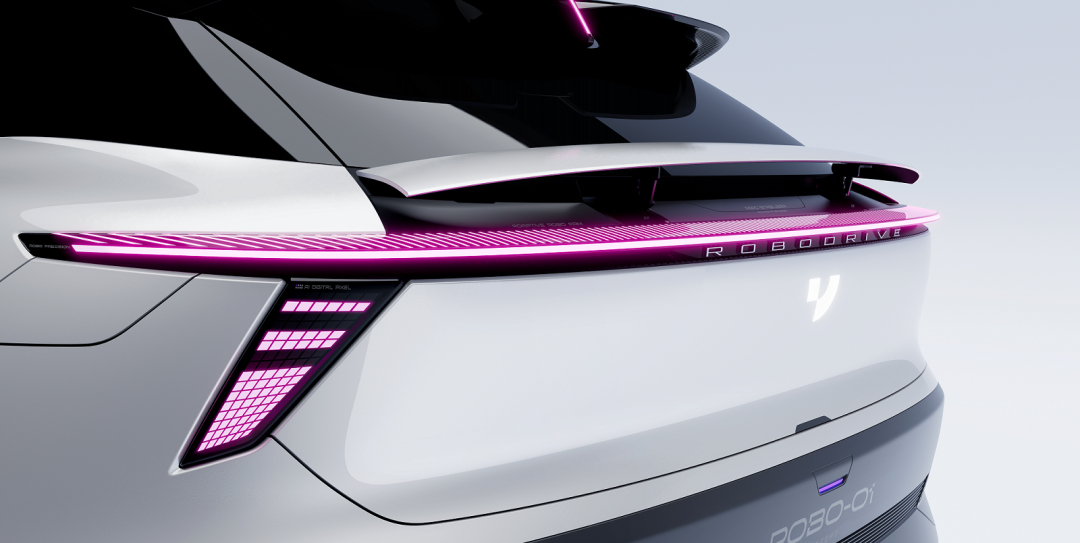 # Translation
# Translation
Each adjustable and collapsible part is accompanied by a motor that supports its “transformation” and a complex mechanical structure.
In a car that costs about 200,000 yuan, the increased cost and weight caused by equipping it with so many “electric” adjustable features and structures, in addition to the basic requirements of the car, are inevitable.
Electric cars are most averse to weight, and household cars are most afraid of cost. Under the double “taboo”, it is difficult to conclude whether these additional features are useful for consumers, but the instability caused by too many motor controls may make the “transformation” characteristic a “fatal” flaw.
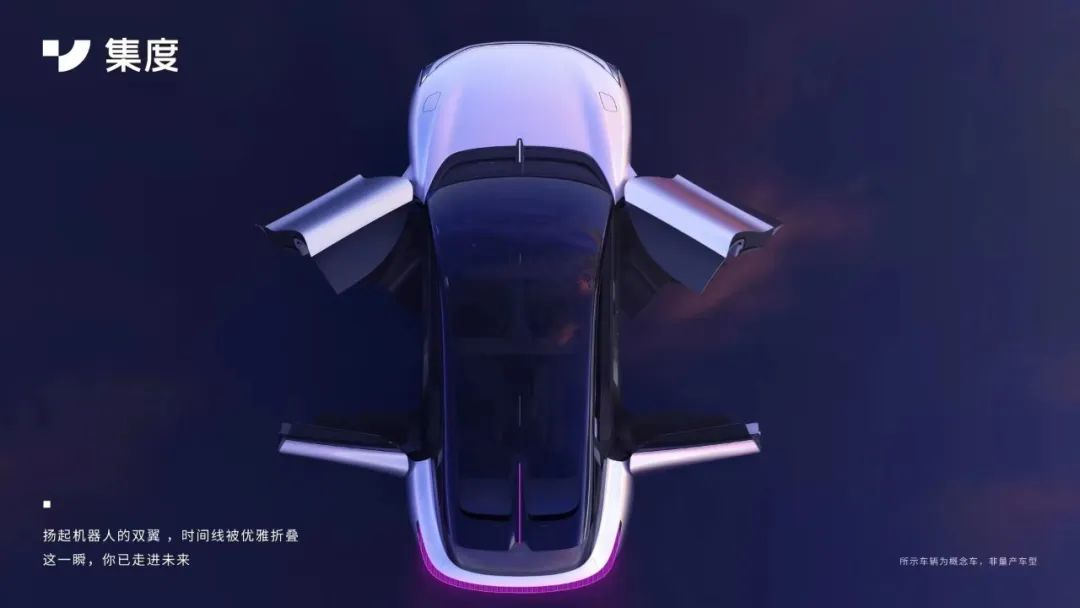
Undoubtedly, the most buggy part of ROBO-01 is the front butterfly door. Speaking of butterfly doors, we cannot skip McLaren. All McLaren models use butterfly doors. In fact, McLaren did not design a mechanism for electrically opening the doors. To make it more convenient for users to open the doors, a thick hydraulic support bar is arranged at the connection between the door and the body.
However, we did not see the hydraulic support structure on ROBO-01. Of course, this is also understandable. Electric doors have been installed on some products, and the entire process of opening the door is actively controlled by the motor. Because it needs to cooperate with various sensors to observe the surrounding environment and protect surrounding pedestrians and drivers, it is reasonable to replace the passive structure of hydraulic power assistance with motor control. But behind this is a large cost expenditure.
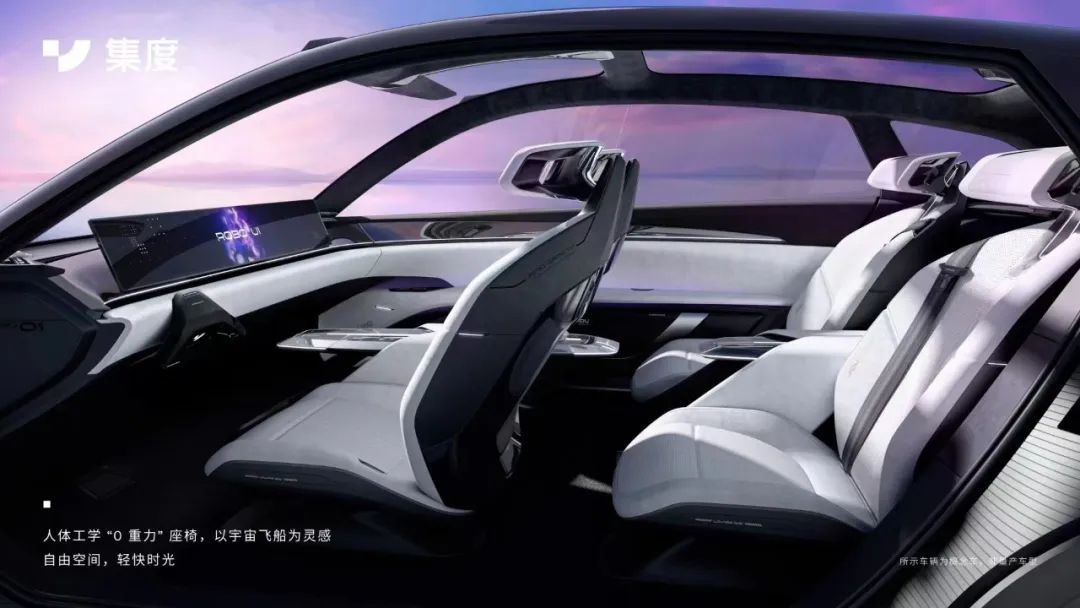
Friends who exercise regularly should have heard of the term “line of force.” Actions that exercise single muscle groups are all on a horizontal or vertical line. This is the result of human evolution under natural gravity. When doing diagonal movements (such as lifting weights diagonally upward), people will feel very strenuous and at the same time mobilize multiple muscle groups and more energy to complete it.
Obviously, ROBO-01 uses such an unnatural way to open the doors. In order to open and close the car door without hydraulic rods, more stabilizing devices need to be arranged inside the connecting mechanism, and the cost, space occupation rate, and weight will increase significantly. Another solution is to reduce the weight of the car door itself and use sturdy yet lightweight materials that can pass collision tests, which will undoubtedly cost more.
So which one will be achieved, the 200,000 yuan mentioned by Robin Li, or the 90% similarity mentioned by him?
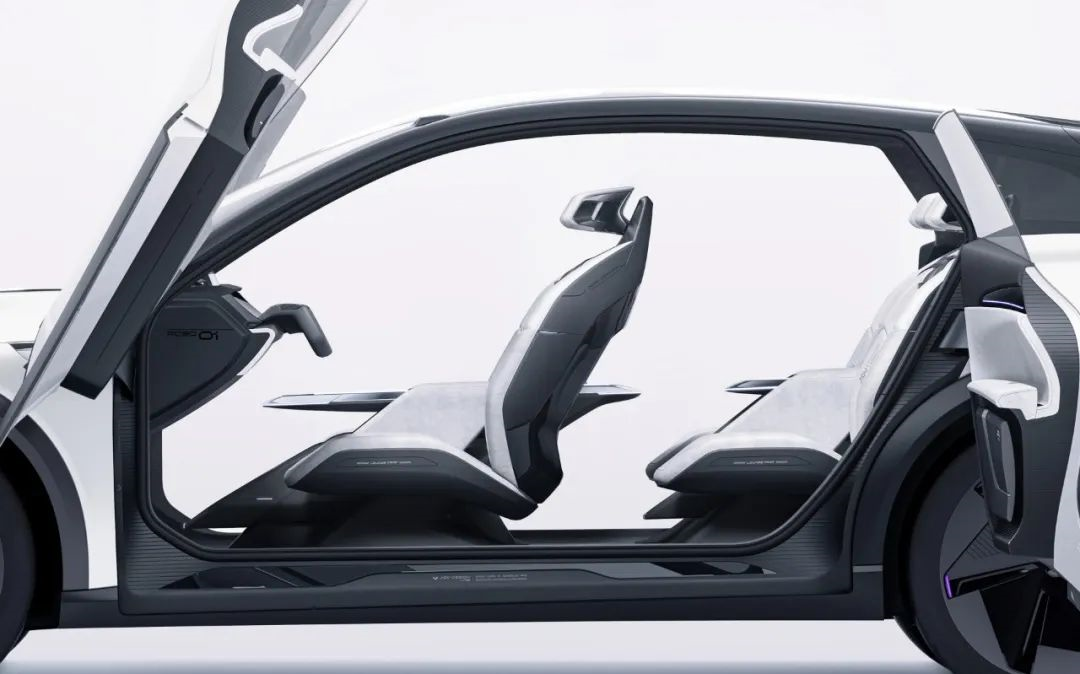 The cost of hardware is visible on the surface, but there are also software costs. Previously, many users complained about the safety issues of automatic doors on Zeekr 001. As the difficulty increases from normal door opening to butterfly doors, not only must we consider the horizontal opening angle on the X-axis, but also the vertical expansion angle on the Z-axis.
The cost of hardware is visible on the surface, but there are also software costs. Previously, many users complained about the safety issues of automatic doors on Zeekr 001. As the difficulty increases from normal door opening to butterfly doors, not only must we consider the horizontal opening angle on the X-axis, but also the vertical expansion angle on the Z-axis.
However, in my opinion, this is not the focus of the problem. The key point is that my parking space does not allow me to open the door so recklessly!
In addition, the simplification of ROBO-01 includes not only butterfly doors but also a tail wing that can be automatically lifted and lowered. The configuration of an automatic tail wing on a 200,000-level car has been seen before, but in the eyes of the discerning, it is a “laughing stock.” As for whether the lift-and-lower function can bring “powerful downforce to improve handling performance during high-speed driving,”
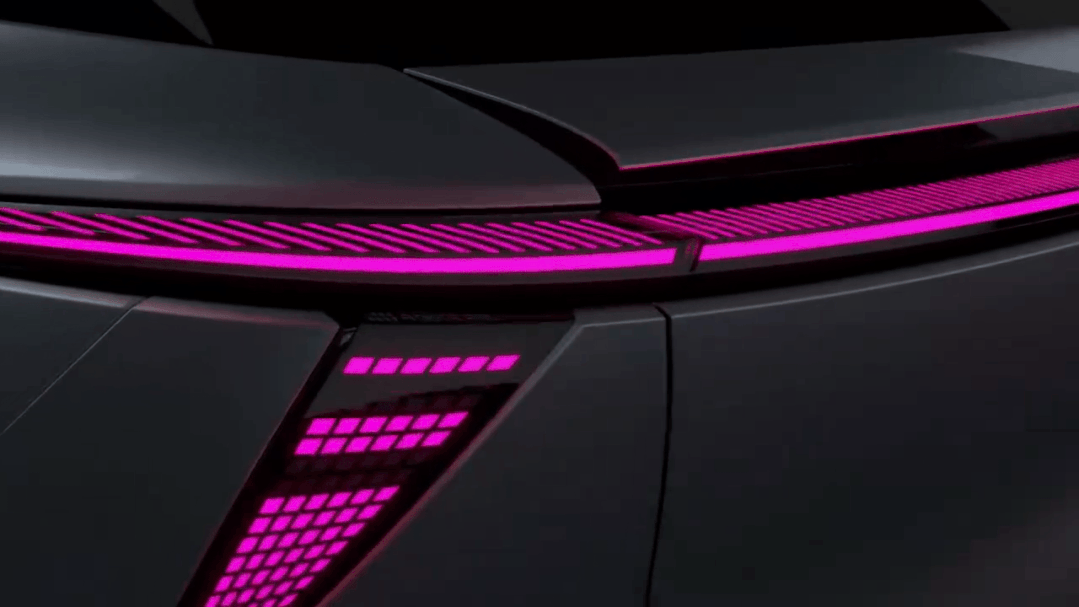
To deeply understand how much “powerful” downforce an automatic tail wing can bring, I consulted an aerodynamic engineer who serves private fleets and got this answer: “The maximum benefit of aero is only 3cts, which is a waste.”
We usually use Cd as the unit of drag coefficient, and 3cts is 0.003Cd. In a completely ideal state, each reduction of 0.01Cd brings a range benefit of 5km at high speed. But what about 0.003? Is it 150 meters? Can it be ignored? But can we ignore the cost of motors, space occupation, weight, and software? If we look at the global production car drag coefficient rankings, we will find that those products that really rank high do not use automatic tail wings. Why is this?
Not long ago, I saw a comment on Bilibili, and later I realized that if car companies give automatic tail wings as a joke to users, there is nothing wrong with it, but exaggerating the effect is a bit funny.

After watching ROBO-01, I went back to look at those exaggerated Japanese concept cars from the 1990s. Of course, those cars eventually died in the womb and were only “concepts,” and today’s Japanese cars still look boring. But you will find that the Japanese really figured it out. If you can’t upgrade the experience or make it worse, then what’s the use of being cool?
A product that appears in the metaverse has been simplified in complexity, which is going backwards.
Finally
Finally, we come to the end.This article is not easy to write. After all, it is easier to output emotions, but careful guessing and questioning requires extensive research, comparison, and consideration. It’s like everyone can describe their imagination of future cars, but a car that is truly accepted by users requires comprehensive consideration of engineering, cost, and usage factors.
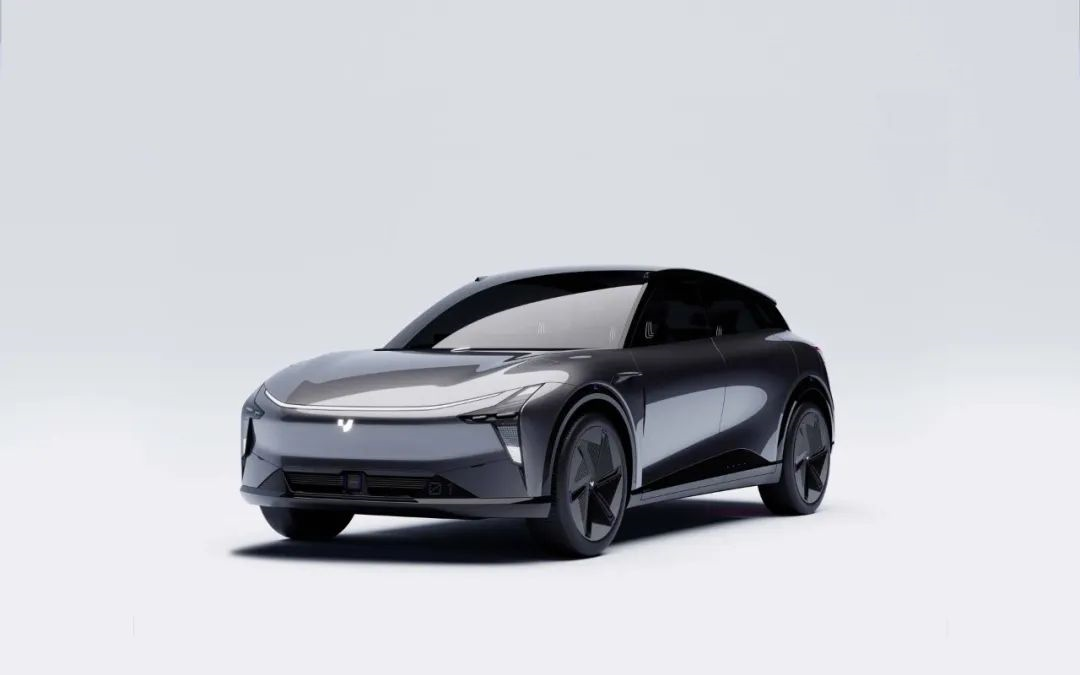
More importantly, in the user’s real usage scenario, whether innovative technologies such as intelligence and automation can bring real value to users. Perhaps this is the key point that ROBO-01 needs to consider from the concept car to the final mass-produced car.
Perhaps for Jidu, the release of this concept car is more like a test, testing the acceptance of capital and the acceptance of intelligence and automation by users.
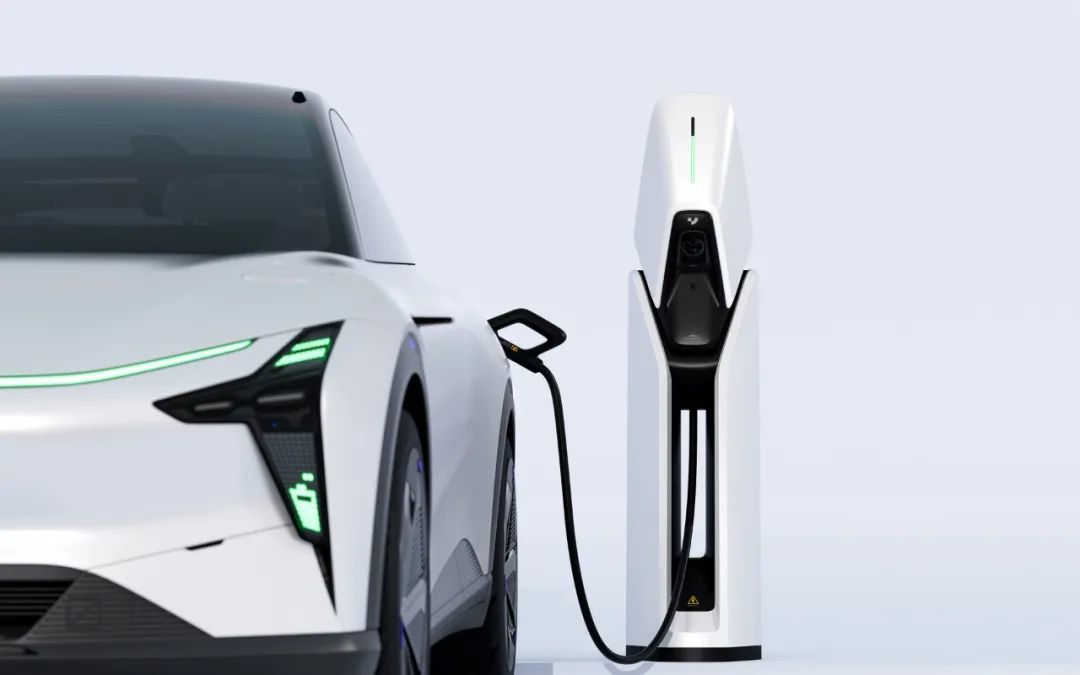
When ROBO-01 debuted, the candid evaluations and questioning on the Internet, is it not a “bottom-line test” of users and media for the various designs and innovative functions on this car and the acceptance of the technology?
Perhaps under everyone’s reasonable questioning and suggestions, the first mass-produced car unveiled by Jidu a few months later may have different results.
This article is a translation by ChatGPT of a Chinese report from 42HOW. If you have any questions about it, please email bd@42how.com.
